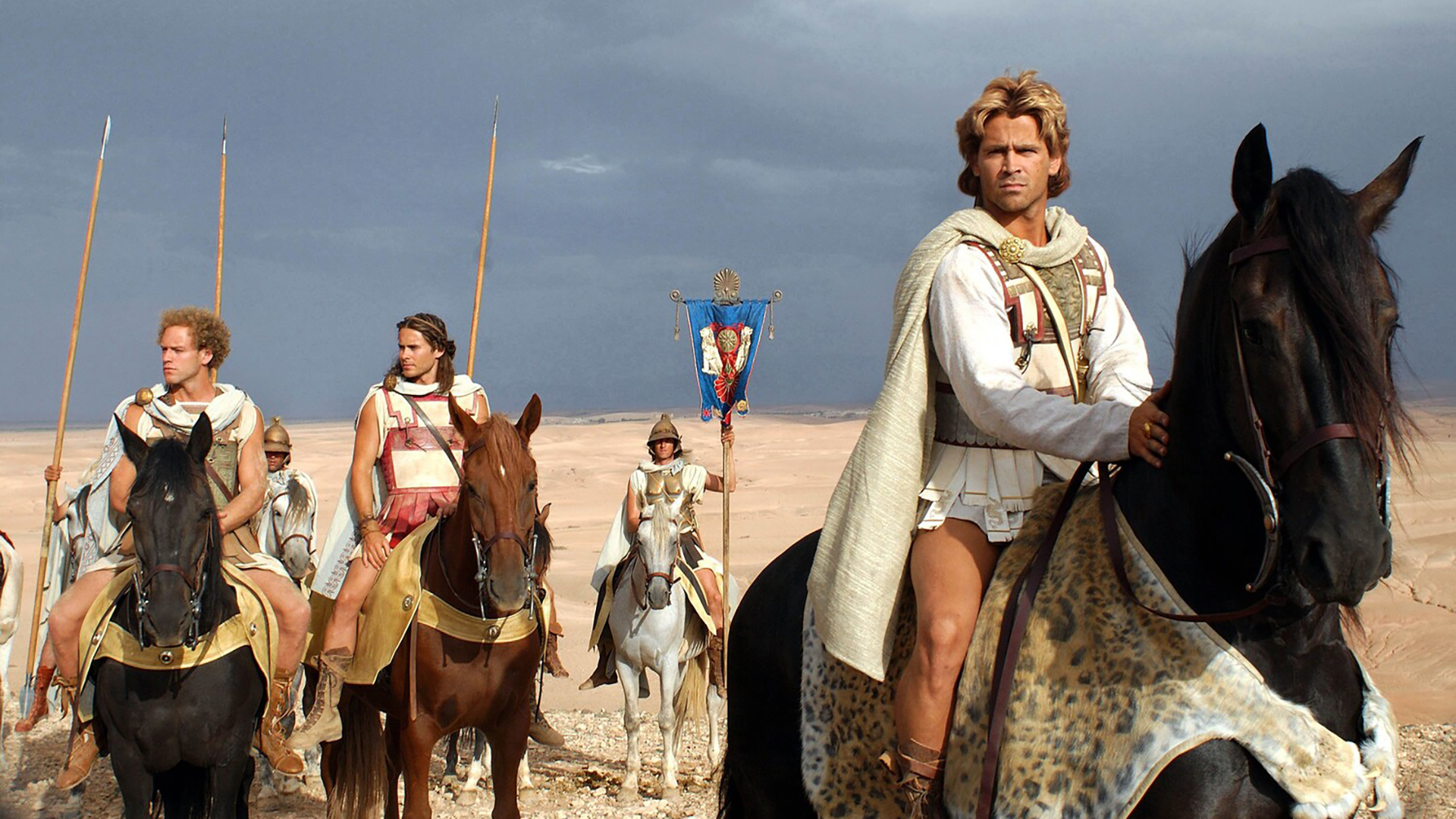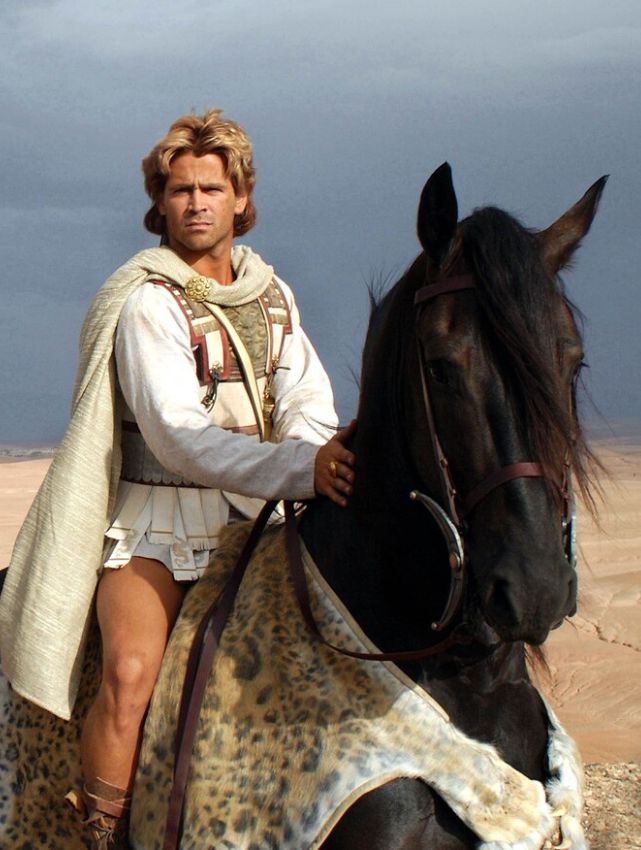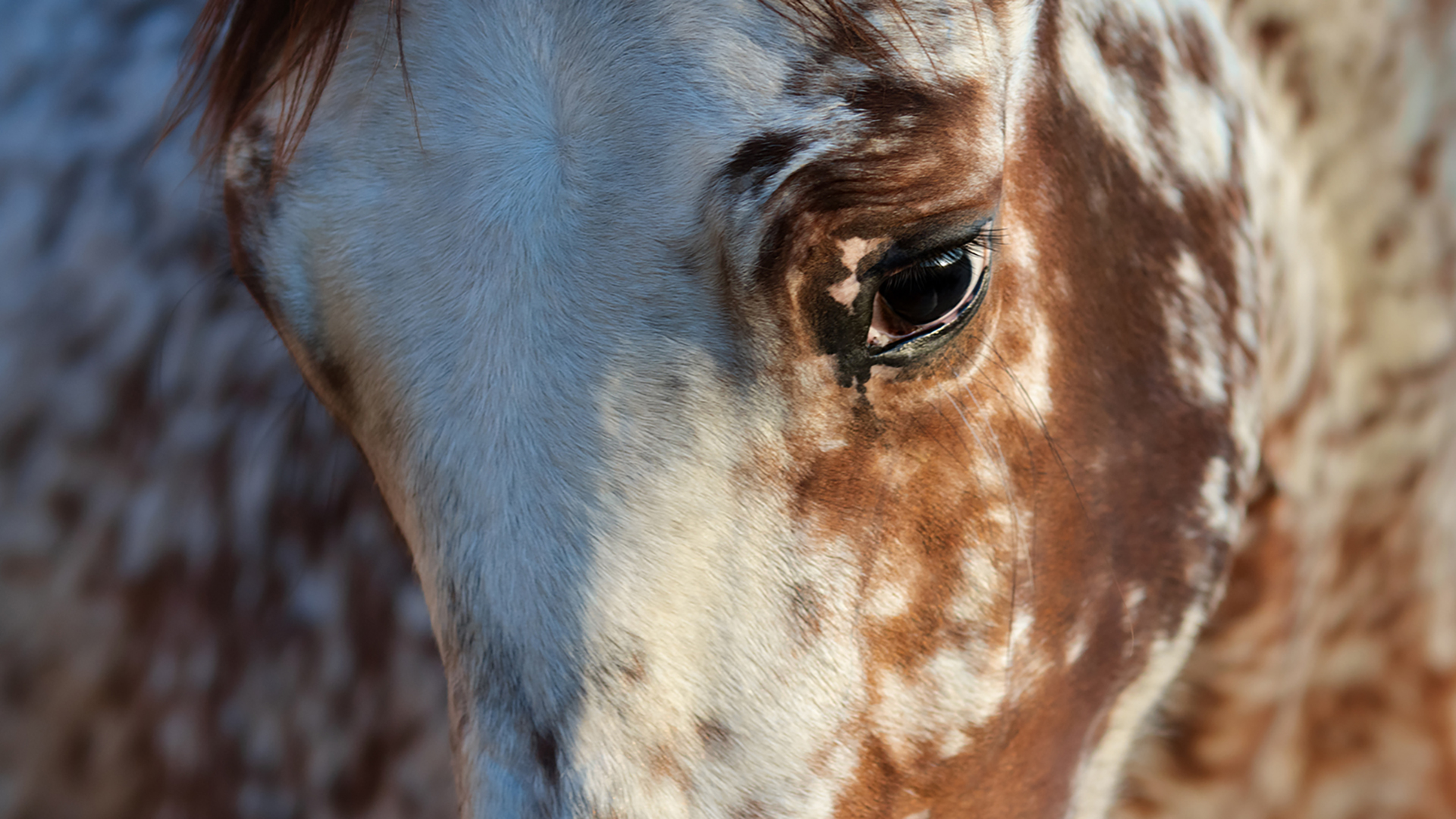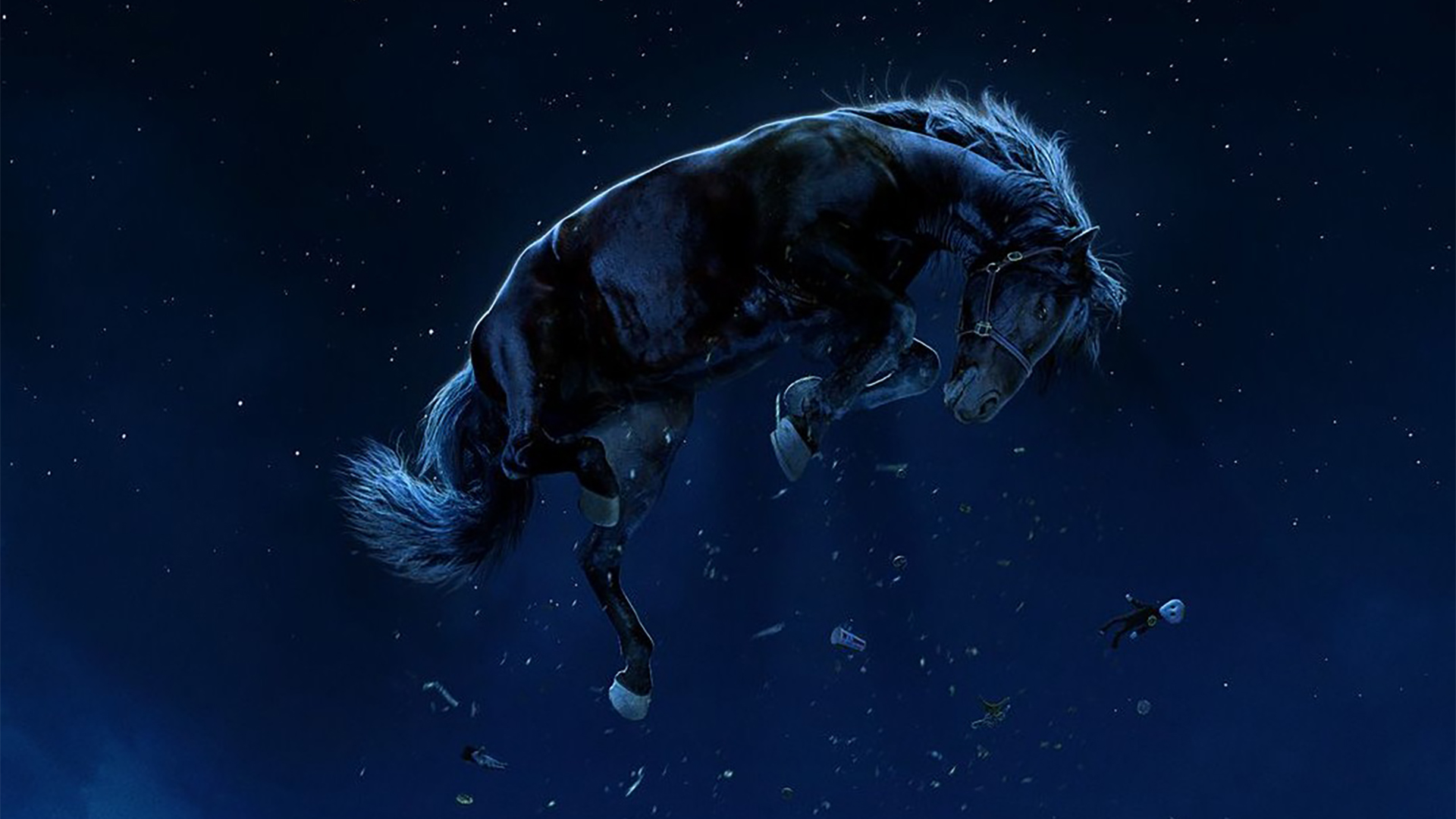Alexander wasn’t as great as everyone expected. It disappointed cinemagoers, investors, the stars, and Oliver Stone… but there are some excellent horse action scenes and bareback riding.
‘ALEXANDER’ – 2004
Directed by Oliver Stone, starring Colin Farrell, Anthony Hopkins and Angelina Jolie
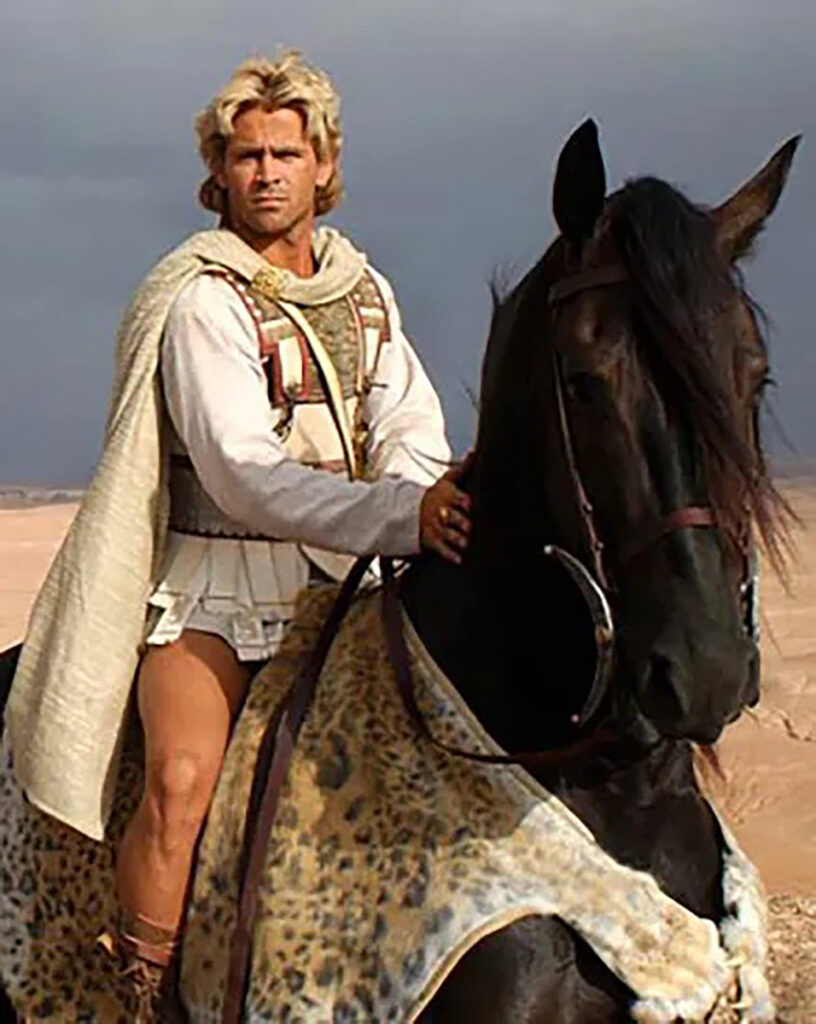
Colin Farrell as Alexander. Image supplied.
For years the noted director Oliver Stone had wanted to direct a film about the sieges and conquests made by the young Macedonian who, at 25, had conquered 90 per cent of the ‘known’ world. He cast Colin Farrell in the lead, and Angelina Jolie as his mother – when she was 26, only a year older than the star.
“Riding bareback is
a very difficult technique…
Colin rode superbly.”
With the exception of allowing that absurd age difference, Stone was keen that his script was an accurate representation of the period and employed classicist Robin Lane Fox. The British historian was an old Etonian and Oxford University fellow who also wrote a gardening column for The Financial Times (he still does) and is known for being an outspoken opponent of garden gnomes.
Alexander, which had a budget of $160 million, had been in development for 15 years before Stone eventually gained funding. Fox was keen to be the historical adviser, but he also stipulated he wanted to ride in the film.
“My request to be in the cavalry charge caused him consternation,” he recalled. “I assured him I’d ridden for 45 years and risked every bone still unbroken in my body, in the yearly pursuit of English foxes.” (Clearly not an outspoken opponent to hunting).
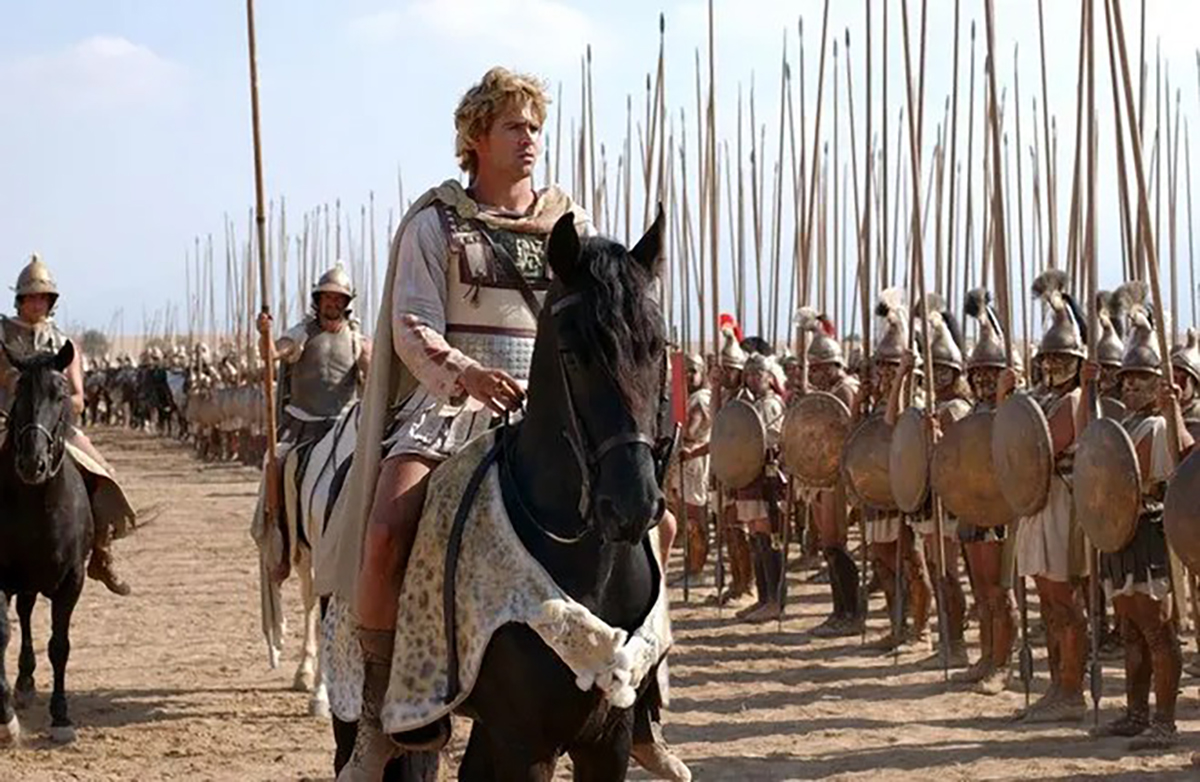
Alexander (Collin Farrell) and his army. Image supplied.
TRIVIA: “Alexander petulantly quarrels with Jolie who’s forever knowingly allowing snakes to slither over her arms and letting those great sensuously chapped lips pout with Machiavellian malice.” – Peter Bradshaw, Guardian film critic.
The picture was filmed over six months in England, Morocco and Thailand, employing scores of stunt people, mobs of horses, extras and elephants. Farrell worked for months perfecting his riding, and he underwent military training near Marrakesh. Joel Proust, Moroccan movie horseman, was based nearby. “I remember when Colin escaped from the camp to have a few drinks with us – and then he slipped back.” (In 2005 Farrell became a teetotaller).
In Madrid, Farrell worked on a farm with trainer Ricardo Cruz who supplied 12 Andalusians and four Friesians for the production. “Riding bareback is a very difficult technique to master even for experienced riders, and I must emphasise Colin rode superbly,” he said.
Farrell didn’t do a bad job in the saddle; the only problem was, in the early part of the picture, he was made to resemble a member of a boy band with beach-blond hair and a pleated mini-skirt. And he did suffer a few injuries during and after filming. He came off when his horse reared and fell on him, causing back pain and cracked ribs, and he fractured his heel falling down the stairs of his hotel.
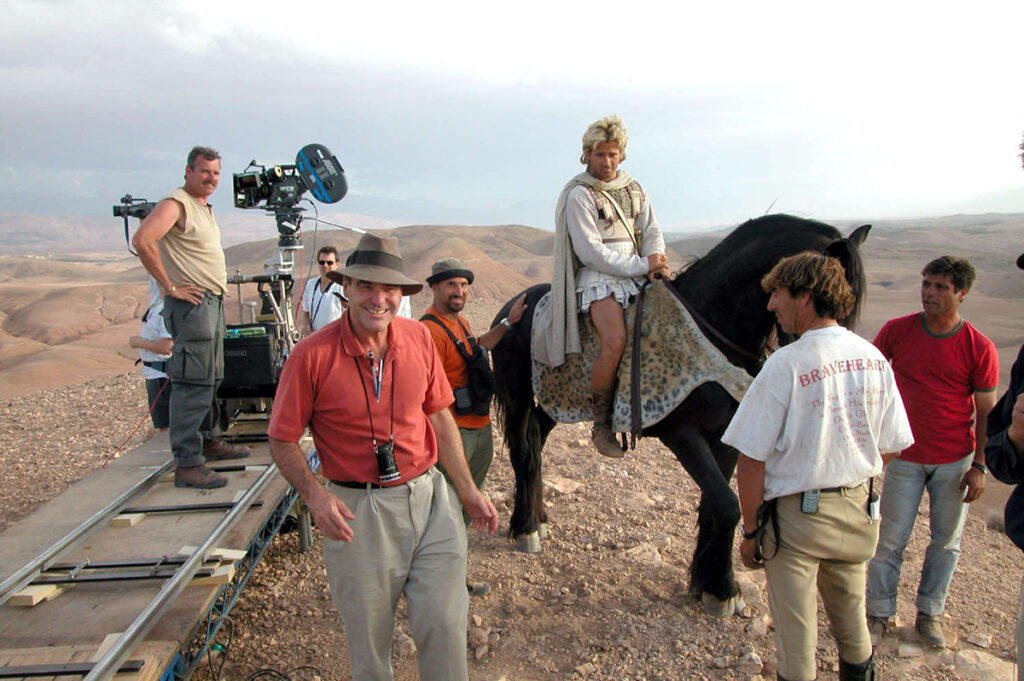
On the set of ‘Alexander’. Image supplied.
Two of Cruz’s Friesians, ‘Boech’ and ‘Gallo’, played ‘Bucephalus’, Alexander’s war horse. (Six years later they also took turns playing Pegasus in Clash of the Titans). In reality, this wouldn’t have been the breed of choice when fighting these battles. They’re slower than many other breeds and if you closely watch the action scenes it is apparent other riders are reining in their mounts in order that Bucephalus can be at the front.
The tale of how the stallion was tamed is ancient history. The horse had been unrideable but young Alexander instinctively knew that horses, as prey animals, often feared shadows, so he led him quietly around gently whispering, letting the horse learn there was nothing to fear from the movement of the sun and shadows. Later Alexander quietly got on to his back. The horse stood alert but calm. Then off they went galloping around in front of all the people, and everyone cheered. Well, that’s according to the legend, anyway.
The rider was played by juvenile actor Connor Paolo, who was trained by Cruz every day for two months. His performance was praised by critics who were less generous to the older cast members.
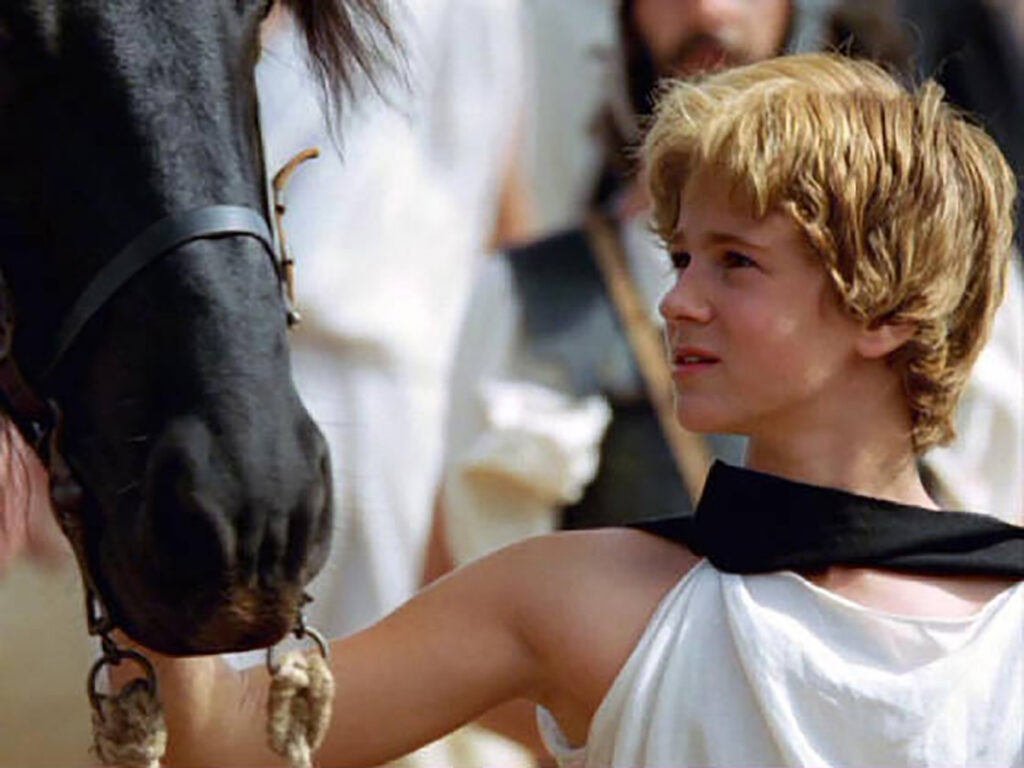
Young Alexander way played by Connor Paolo. Image supplied.
TRIVIA: The horse’s name is from the Greek “bous” meaning “ox” and “cephalo” meaning “head” – ox-head. Some say because he had an ox-head brand on his haunches, others because he had a head like an ox. Legend has it he died aged 30. In his honour Alexander founded the city of Bucephala where he died. This is now named Jhelum in modern-day Pakistan.
As well as the horses there were 25 elephants hired for the battle scenes. Stone was pleased with their behaviour. “Some of the horses were reckless with their riders,” he said, “whereas the elephants were much more careful not to harm the actors.”
Sadly, one of these elephants died later in Thailand. Fifty-year-old ‘Phlai Khlao’ was killed for his tusks by poachers. For many years he had been part of ceremonial performances for the country’s royal family.
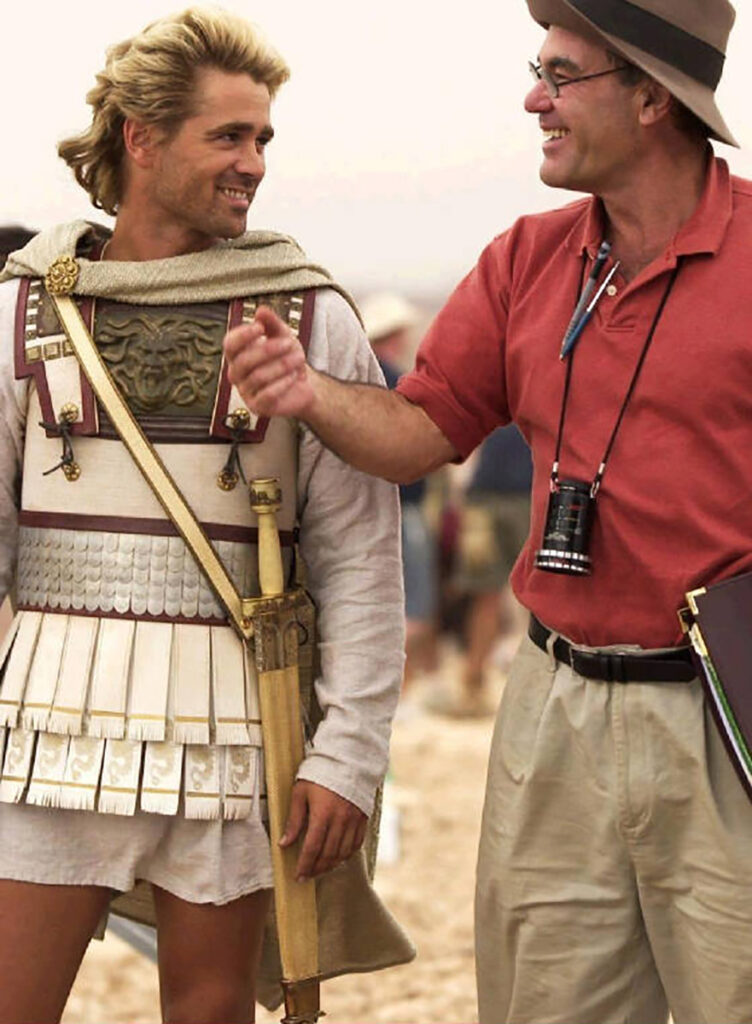
Young Alexander way played by Connor Paolo. Image supplied.
“A group of Greek lawyers
tried to ban it on the grounds
of Stone denigrating the figure
of Alexander the Great…”
The film almost never made it to cinemas in Greece. A group of Greek lawyers tried to ban it on the grounds of Stone denigrating the figure of Alexander the Great by referring to his bisexuality. The movie ultimately got a theatrical release where it premiered at number one.
When Stone’s film went into production, Baz Luhrmann decided to pull the plug on his unique treatment of Alexander. It was to star Leonardo DiCaprio and Nicole Kidman as his mother (she’s seven years older). The Australian director never revisited the concept and made Australia instead. (The Secrets Behind ‘Australia’, Equestrian Life, December 2020).
You can watch Alexander on various streaming services. Also available are a Director’s Cut and a Final Cut.
Next time in Horses & Movies, Beyonce – how horses have helped promote her music. EQ
